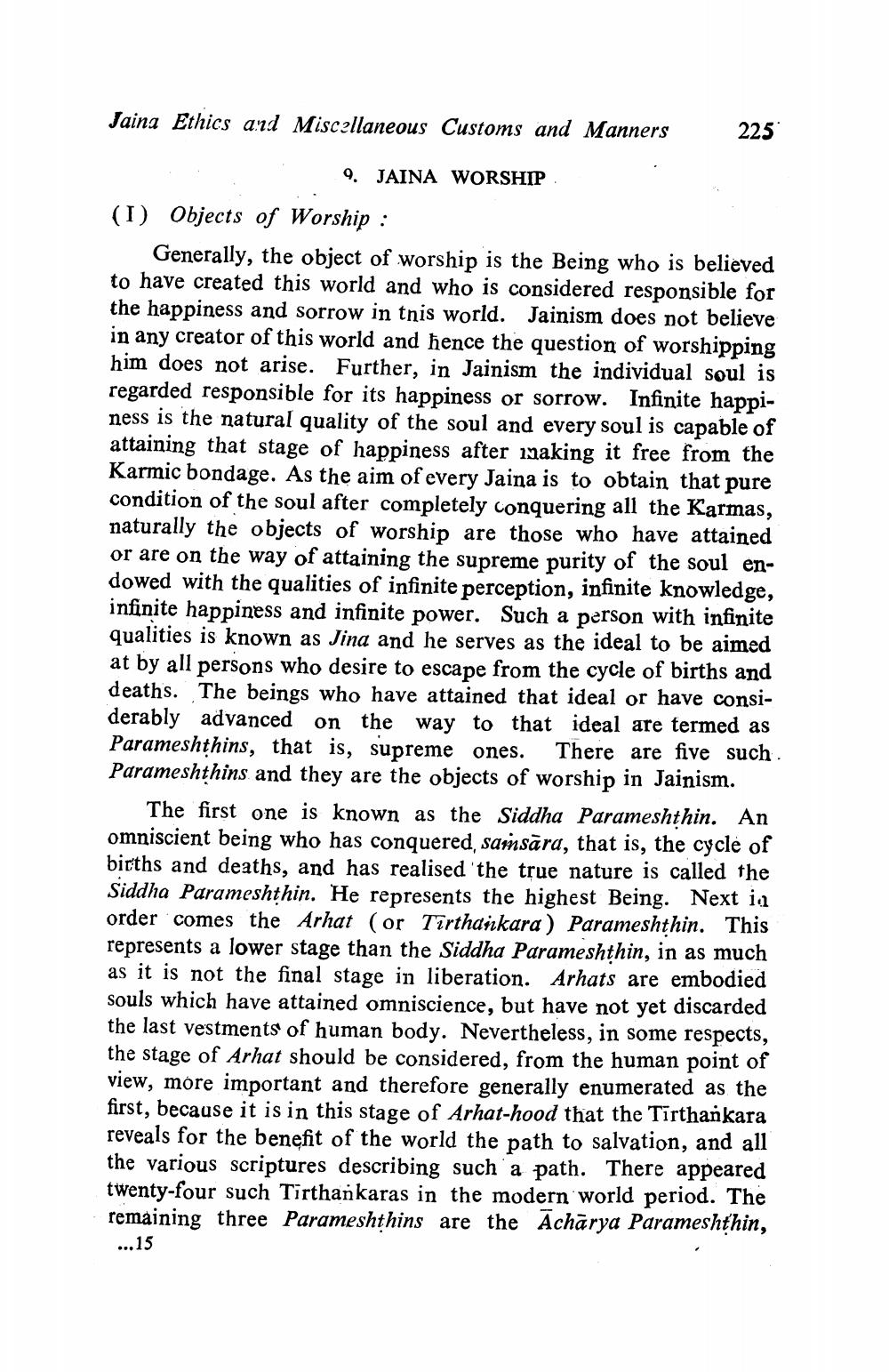________________
Jaina Ethics and Miscellaneous Customs and Manners
225
9. JAINA WORSHIP (1) Objects of Worship :
Generally, the object of worship is the Being who is believed to have created this world and who is considered responsible for the happiness and sorrow in this world. Jainism does not believe in any creator of this world and hence the question of worshipping him does not arise. Further, in Jainism the individual soul is regarded responsible for its happiness or sorrow. Infinite happiness is the natural quality of the soul and every soul is capable of attaining that stage of happiness after making it free from the Karmic bondage. As the aim of every Jaina is to obtain that pure condition of the soul after completely conquering all the Karmas, naturally the objects of worship are those who have attained or are on the way of attaining the supreme purity of the soul endowed with the qualities of infinite perception, infinite knowledge, infinite happiness and infinite power. Such a person with infinite qualities is known as Jina and he serves as the ideal to be aimed at by all persons who desire to escape from the cycle of births and deaths. The beings who have attained that ideal or have considerably advanced on the way to that ideal are termed as Parameshthins, that is, supreme ones. There are five such Parameshthins and they are the objects of worship in Jainism.
The first one is known as the Siddha Parameshthin. An omniscient being who has conquered, samsāra, that is, the cycle of births and deaths, and has realised the true nature is called the Siddha Parameshthin. He represents the highest Being. Next ia order comes the Arhat (or Tirthankara) Parameshthin. This represents a lower stage than the Siddha Parameshthin, in as much as it is not the final stage in liberation. Arhats are embodied souls which have attained omniscience, but have not yet discarded the last vestments of human body. Nevertheless, in some respects, the stage of Arhat should be considered, from the human point of view, more important and therefore generally enumerated as the first, because it is in this stage of Arhat-hood that the Tirthankara reveals for the benefit of the world the path to salvation, and all the various scriptures describing such a path. There appeared twenty-four such Tirtharkaras in the modern world period. The remaining three Parameshthins are the Achārya Parameshthin, ...15




